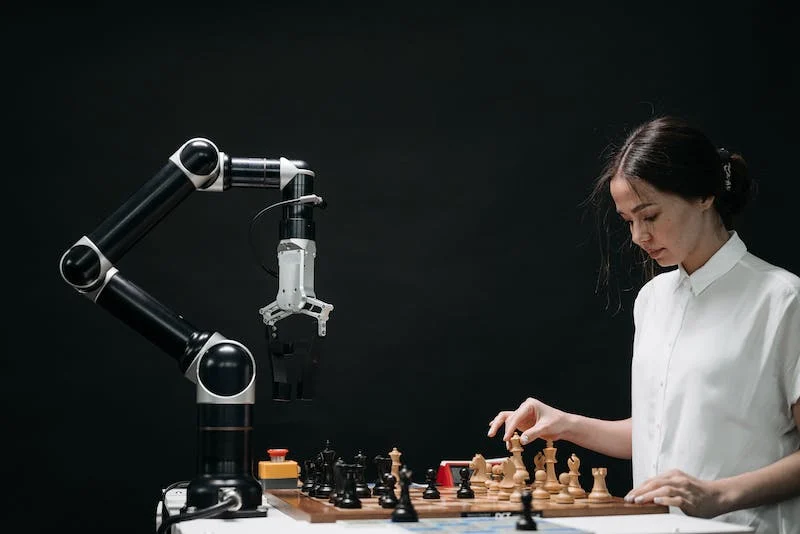Contents
- The End of Add-On AI
- Building the Intelligent Core
- Data as the Lifeblood of AI Ubiquity
- Continuous Learning and Real-Time Inference
- Why Legacy Systems Must Evolve
- The Business Value of AI Ubiquity
- Governance, Trust, and Ethical AI
- Industry Case Studies
- Humans at the Center of Modernization
- The Future of AI Infrastructure
In 2025, artificial intelligence is no longer a futuristic concept or a secondary feature. It has become the heartbeat of enterprise technology. From IT architecture to business operations, AI is now deeply embedded in the digital fabric of organizations, a phenomenon Deloitte defines as AI ubiquity and core modernization.
According to Deloitte’s 2025 Tech Trends Report, AI is no longer a bolt-on solution but a foundational element akin to electricity or the internet. This marks a fundamental shift in how enterprises view, design, and evolve their technology ecosystems. It’s not just about smarter tools, it’s about transforming the entire digital core that supports organizational intelligence.
The End of Add-On AI
For years, enterprises treated AI as an accessory, a tool added onto legacy systems to handle specific tasks such as automation or analytics. But Deloitte warns that this model limits innovation and scalability. In 2025, AI is being re-engineered into the core of IT systems. This shift represents a mindset change: AI is no longer a luxury feature but a critical infrastructure component.
Mike Bechtel, Deloitte’s Chief Futurist, explains: “To unlock true enterprise value, AI must be native to your architecture—not an afterthought. Intelligence should be built in, not bolted on.” That means organizations must rethink how their systems store, process, and utilize data to make AI an organic part of operations.
This transition is giving rise to what Deloitte calls the intelligent core: a foundation that supports continuous learning, real-time inference, and scalable compute. The intelligent core makes it possible for systems to evolve and improve on their own, adjusting to changes in data and behavior patterns without human intervention.
Building the Intelligent Core
The intelligent core integrates AI into every system layer—from databases and cloud infrastructure to operational workflows. To achieve this transformation, organizations are:
- Refactoring legacy systems to align with AI-driven architectures.
- Redesigning frameworks using microservices, APIs, and event-driven models.
- Scaling compute power through GPUs, TPUs, and cloud-native infrastructure.
Each of these steps enables companies to move from reactive systems to proactive, self-optimizing environments. Instead of waiting for issues to arise, intelligent systems detect anomalies, predict outcomes, and act in real time.
Bechtel summarizes it best: “Modernization isn’t about patching old systems—it’s about rebuilding intelligence into the foundation.” Organizations that have started this journey are already seeing greater agility and adaptability as AI begins to drive innovation at scale.
Data as the Lifeblood of AI Ubiquity
Central to this evolution is data integration. AI systems thrive on diverse, high-quality, and connected data streams. Legacy organizations, often burdened by data silos, are embracing data mesh and lakehouse architectures to create unified ecosystems.
This integration allows real-time insights and predictive intelligence to flow across departments. In a bank, for example, fraud detection algorithms now analyze transactions as they happen rather than after the fact. Manufacturers can anticipate supply chain disruptions before they occur. Retailers use AI-powered analytics to personalize customer experiences on the fly.
These developments signify a move away from isolated AI projects. Instead, enterprises are adopting AI-driven operations that span across functions, optimizing entire ecosystems rather than individual processes.
Continuous Learning and Real-Time Inference
Unlike traditional models that learn from static datasets, modern AI ecosystems support continuous learning and real-time inference. Systems can adapt instantly as new data arrives, enabling them to make better and faster decisions.
For example, a logistics company can retrain models daily to optimize delivery routes based on weather, traffic, and demand. Hospitals use real-time inference to monitor patient vitals, predicting emergencies before they happen. Retailers update pricing strategies dynamically based on competitor behavior and consumer sentiment.
Cloud providers such as AWS, Google Cloud, and Microsoft Azure now offer dedicated AI infrastructure designed for continuous inference and real-time feedback loops. This capability ensures that AI-driven applications can operate with unparalleled speed and precision, minimizing latency while maximizing impact.
Why Legacy Systems Must Evolve
Legacy systems—built on outdated code, rigid architectures, and slow data pipelines—are unable to sustain AI workloads. Deloitte calls them “innovation blockers.” These systems not only restrict performance but also hinder experimentation, which is vital in the AI-driven economy.
Modernization demands migration to cloud-native, API-connected, and AI-compatible architectures. This isn’t just a technical evolution; it’s a strategic imperative for survival. Without modernization, enterprises risk being left behind by more agile competitors.
Consider a few examples: Financial institutions are integrating AI into risk scoring and compliance systems to detect anomalies instantly. In healthcare, adaptive diagnostic models are retrained with new medical data to improve patient outcomes. In education, personalized learning platforms are powered by AI feedback that evolves in real time.
Each of these advancements depends on core modernization, on having a digital foundation capable of learning, scaling, and improving continuously.
The Business Value of AI Ubiquity
The financial and operational payoffs of AI ubiquity are massive. McKinsey reports that businesses embedding AI deeply into operations can improve efficiency by 30–40% and reduce IT maintenance costs by up to 25%.
Deloitte adds that enterprises achieving AI ubiquity see exponential innovation gains. These include faster time-to-market, enhanced customer personalization, predictive analytics, and improved workforce productivity.
AI ubiquity transforms technology from a cost center into a value generator, a driver of agility, resilience, and sustainable growth. As more companies modernize their cores, the competitive advantage will belong to those who integrate intelligence into every layer of their business.
Governance, Trust, and Ethical AI
As AI becomes omnipresent, governance frameworks are vital. AI ubiquity without transparency invites systemic risk. Deloitte emphasizes the need for AI stewardship that ensures accountability, fairness, and compliance with global regulations.
Organizations are creating cross-functional AI governance councils to oversee model ethics, bias detection, explainability, and data security. The goal is to promote responsible modernization that aligns technological progress with human values. AI must be powerful, but also predictable and fair.
The conversation around ethical AI is now central to modernization efforts. Trust is not just a compliance issue—it’s a competitive differentiator. Companies that can demonstrate fairness, explainability, and safety will be better positioned to gain customer and stakeholder confidence.
Industry Case Studies
Banking and Finance
Banks are using AI to power fraud detection, credit scoring, and personalized customer experiences. JPMorgan, for instance, has integrated AI into over 300 banking processes, making risk management more dynamic and efficient.
Healthcare
Hospitals are adopting AI-driven monitoring tools that predict patient deterioration in real time. These systems are connected directly to electronic health records, allowing medical professionals to intervene earlier and more effectively.
Manufacturing
Smart factories are combining edge AI with predictive maintenance to minimize downtime and maximize productivity. AI models continuously analyze sensor data to predict equipment failures before they occur.
Public Sector
Governments are embracing modernization to enhance cybersecurity, automate administrative tasks, and allocate public resources more intelligently. These efforts reflect a growing recognition that public systems, too, need intelligent cores.
Humans at the Center of Modernization
Despite automation, people remain at the heart of modernization. AI ubiquity empowers employees by removing repetitive tasks and allowing them to focus on creative, strategic, and analytical work. This human-AI collaboration is redefining productivity across industries.
Deloitte calls these blended teams fusion teams, groups that unite technologists, data scientists, and domain experts to co-create intelligent solutions. Fusion teams exemplify how AI ubiquity enhances, rather than replaces, human expertise.
AI ubiquity thus isn’t just a technical revolution; it’s a cultural one. The workforce of the future will be adaptive, data-literate, and capable of working symbiotically with intelligent systems.
The Future of AI Infrastructure
In the coming decade, AI will be as foundational as electricity, an invisible utility powering every digital process. Systems will not merely use AI; they will be AI.
Organizations leading this transition view modernization as continuous evolution. Their intelligent cores learn, adapt, and improve over time, ensuring that innovation never stops. Those who lag risk becoming obsolete in an increasingly intelligent economy.
Bechtel captures the shift succinctly:
“AI isn’t something you plug in anymore. It’s something you build around.”
This philosophy defines the next era of digital transformation. AI ubiquity and core modernization are not optional upgrades, they are the foundation of future-ready enterprises.
Internal Link: For related insights, see our article on Agentic AI and Autonomous Systems.
External Sources:




